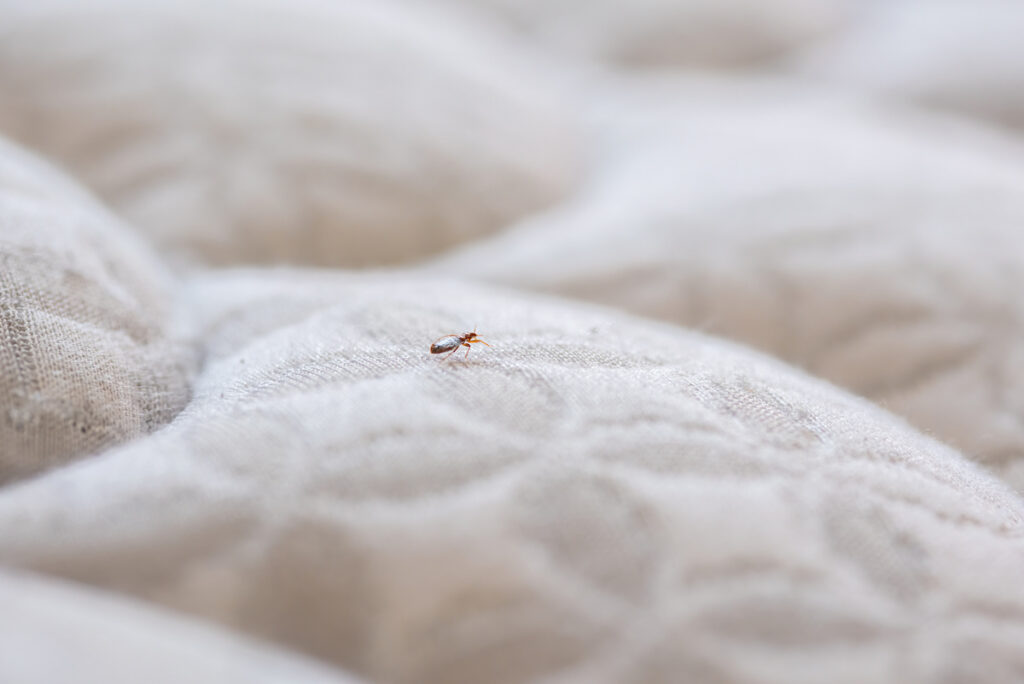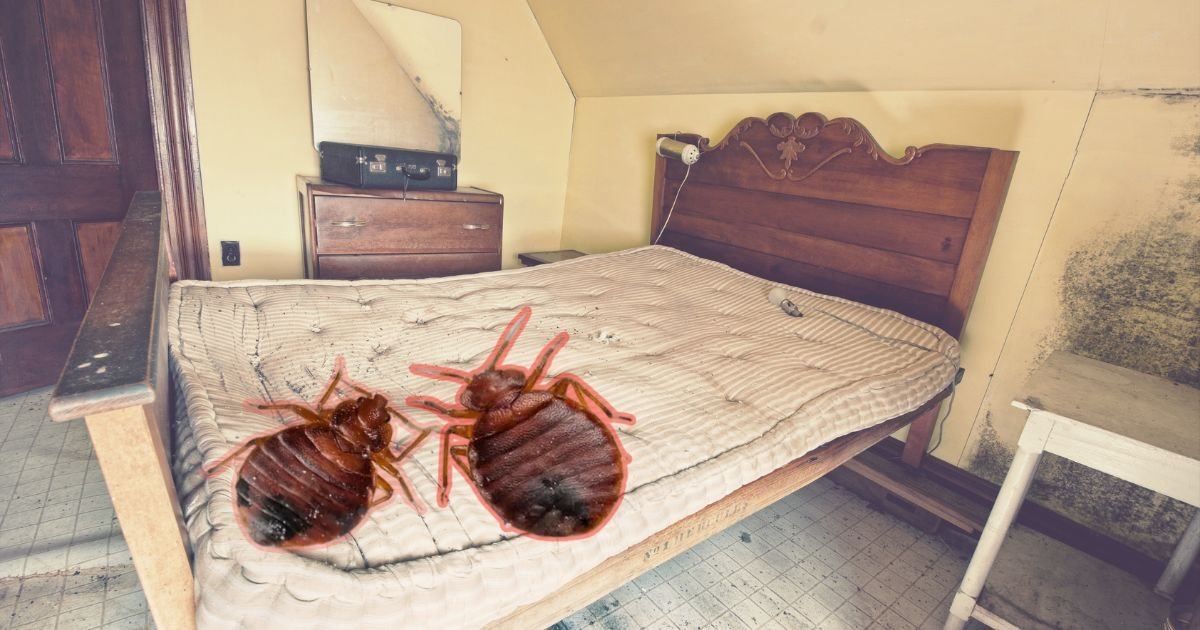To prevent bed bugs from coming home with you, carefully inspect hotel rooms and luggage. Use protective covers on mattresses and encase your luggage when traveling.
Prevent hitchhiking by being mindful of your surroundings and avoiding placing clothes or bags on infested furniture or beds. Additionally, thoroughly inspect used furniture and clothes before bringing them into your home to avoid introducing bed bugs. These proactive measures can help prevent the spread of bed bugs and keep your home and belongings safe.
With these precautions, you can minimize the risk of bed bugs infesting your living spaces and enjoy peace of mind while traveling or bringing in new items.

Credit: www.nytimes.com
2. Understanding Bed Bugs
2.1 Appearance And Behavior
Bed bugs are small, reddish-brown insects that feed on the blood of humans and animals.
- Flat, oval-shaped bodies
- Can range in size from a poppy seed to a rice grain
- No wings, but they can crawl quickly
- Typically active at night
2.2 Common Hiding Places
Bed bugs are expert hiders, making it challenging to detect their presence.
- Seams and folds of mattresses
- Crevices in bed frames and headboards
- Behind wallpaper and wall art
- Electrical outlets and baseboards
3. Signs Of Bed Bug Infestation
3. Signs of Bed Bug Infestation:
Knowing the signs of a bed bug infestation is crucial in preventing these unwanted pests from entering your home. Be vigilant in checking for the following indicators to safeguard your living space:
3.1 Strongbites And Skin Reactions/strong
Look out for red, itchy bites on your skin upon waking up, a common indication of bed bug presence.
- Inspect your body after sleeping,
- Spot clusters of bites,
- Seek medical advice if necessary.
3.2 Strongblood Stains And Fecal Droppings/strong
Check for dark spots on your sheets, a likely sign of bed bugs having fed during the night
- Inspect mattress seams and crevices,
- Identify rust-colored spots,
- Clean affected areas thoroughly.
3.3 Strongmusty Odor/strong
Pay attention to a musty, sweet scent in your living space, which could signal a bed bug presence nearby.
- Inspect furniture and upholstery,
- Ventilate rooms regularly,
- Seek professional inspection if needed.
4. How Bed Bugs Travel
Bed bugs are notorious for their ability to hitch a ride and infest new locations. Understanding how these pests travel is crucial in preventing them from coming home with you. Here are the two main ways that bed bugs travel:
4.1 Hitchhiking On People And Belongings
Bed bugs are excellent hitchhikers. They have a strong sense of smell and can detect carbon dioxide and body heat from a distance. Once they locate a potential host, bed bugs will crawl onto clothing, bags, and other belongings to hitch a ride.
To minimize the risk of bed bugs hitchhiking into your home, follow these preventive measures:
- Inspect your surroundings: Check hotel rooms, movie theaters, public transportation, and other public spaces for signs of bed bugs before sitting or placing your belongings down.
- Keep belongings off the ground: Avoid placing your bags, coats, or other belongings on the floor or upholstered furniture where bed bugs can easily crawl onto them. Use hooks, hangers, or luggage racks instead.
- Seal items in plastic bags: When traveling, seal your clothing and personal items in plastic bags to create a barrier against bed bugs. This will also make it easier to spot any signs of an infestation.
- Wash and dry clothing on high heat: Upon returning home, immediately wash and dry your clothes on high heat to kill any potential bed bugs that may have hitchhiked.
- Inspect second-hand items: When acquiring used furniture, clothing, or other items, thoroughly inspect them for any signs of bed bugs before bringing them into your home.
4.2 Infested Furniture And Clothing
Bed bugs can also travel through infested furniture and clothing. They hide in cracks, crevices, and seams of beds, sofas, chairs, and other upholstered items. They can also stow away in clothing, especially if left in infested areas.
To prevent bed bugs from infested furniture and clothing, consider the following tips:
- Avoid acquiring used furniture without inspection: Before bringing any second-hand furniture into your home, thoroughly inspect it for signs of bed bugs. Pay close attention to seams, cracks, and crevices.
- Regularly inspect and vacuum upholstered furniture: Routinely check and vacuum your upholstered furniture to remove any potential hiding spots for bed bugs.
- Wash and dry infested clothing on high heat: If you suspect any clothing might be infested, wash and dry it on high heat to eliminate bed bugs.
- Store infrequently used clothing properly: If you have seasonal clothing or items that are rarely used, store them in sealed plastic bags or containers to protect them from bed bugs.
By being aware of how bed bugs travel and following these preventive measures, you can greatly reduce the chances of bringing these unwanted pests into your home.</p
5. Steps To Prevent Bringing Bed Bugs Home
When it comes to preventing bed bugs from hitching a ride home with you, taking proactive steps is essential. By following these 5 important tips, you can significantly reduce the risk of bringing these pesky pests into your home.
5.1 Checking Hotel Rooms
Before settling into a hotel room, take a few minutes to inspect the area. Start by pulling back the bed sheets and examining the mattress seams, headboard, and nearby furniture for any signs of bed bugs, such as dark spots or tiny bloodstains.
5.2 Inspecting Used Furniture
When purchasing second-hand furniture, it’s crucial to thoroughly examine each piece for any indications of bed bugs. Pay close attention to seams, crevices, and folds, and consider using a flashlight to inspect hard-to-see areas.
5.3 Laundering And Drying Clothes
After traveling or spending time in public places, promptly launder and dry your clothes on high heat to eliminate any potential bed bugs. Be sure to inspect your luggage and bags, removing and washing any potentially contaminated items.
5.4 Using Bed Bug Proof Mattress Encasements
Investing in bed bug proof mattress encasements can provide an extra layer of protection for your bed. These durable covers create a barrier that prevents bed bugs from nesting in your mattress and box spring, reducing the risk of infestation.
5.5 Vacuuming And Cleaning Regularly
To prevent bed bugs from taking up residence in your home, maintain a regular cleaning routine. Vacuum upholstery, baseboards, and other potential hiding spots frequently, and promptly address any signs of infestation or pest activity.
6. Bed Bug Travel Tips
6. Bed Bug Travel Tips
6.1 Packing Essentials
When packing for your trip, it’s crucial to take precautions to prevent bed bugs from hitching a ride back home with you. Here are some packing essentials to help keep the pesky critters at bay:
- Sealable Plastic Bags: Store clothes, shoes, and other items in sealable plastic bags to create a barrier against bed bugs.
- Travel-Sized Bed Bug Spray: Pack a travel-sized bed bug spray to address any potential bed bug encounters during your trip.
- Laundry Bag: Separate dirty clothes from clean items by packing a designated laundry bag for your travels.
- Compact Luggage: Opt for hard-shell luggage with minimal seams and crevices, making it harder for bed bugs to find hiding spots.
6.2 Avoiding Bed Bugs In Public Transportation
Whether you’re traveling by plane, train, or bus, understanding how to avoid bed bugs in public transportation can help safeguard your belongings. Consider the following tips:
- Inspect Your Seat: Prior to settling in, inspect your seat and surrounding area for any signs of bed bugs.
- Keep Luggage Elevated: Avoid placing your luggage on the floor or upholstered seats, as these areas are prime bed bug hiding spots.
- Use Protective Covers: Utilize protective covers for your belongings, such as seat covers or luggage encasements, to minimize the risk of bed bug exposure.
6.3 Treating Luggage After Travel
After returning from your trip, it’s essential to take proactive measures to treat your luggage and prevent any potential bed bug infestations at home. Consider the following steps:
- Inspect and Clean: Thoroughly inspect and clean your luggage, paying close attention to seams, zippers, and pockets where bed bugs may hide.
- Hot Dryer Cycle: Place clothing and fabric items from your trip into a hot dryer cycle for at least 30 minutes to eliminate any potential bed bugs.
- Steam Cleaning: Consider using a handheld steamer to treat your luggage and kill any bed bugs that may have made their way inside.

Credit: housemanservices.com
7. What To Do If You Bring Bed Bugs Home
Discovering bed bugs in your home can be a distressing experience. Thankfully, there are several steps you can take to combat the infestation and prevent the spread of these pesky critters. In this section, we will explore two crucial actions you should consider if you find yourself in this unfortunate situation.
7.1 Isolate And Contain Infested Items
If you suspect you have brought bed bugs home, it is essential to act swiftly and isolate any infested items. This will help prevent the bugs from spreading further and make the eradication process more manageable. Follow these steps to effectively deal with infested items:
- Place all infested clothing, bedding, and linens in sealed plastic bags.
- Label the bags clearly to prevent accidental exposure or confusion.
- Transport the bags directly to the laundry room or a designated infestation-free area.
- Wash the infested items in hot water (at least 120°F) for a minimum of 30 minutes. Ensure you use an appropriate laundry detergent.
- Dry the items thoroughly using high heat settings. This will help eliminate any surviving bed bugs.
- Seal the cleaned items in new plastic bags before returning them to the infestation-free area.
- Consider disposing of heavily infested items that cannot be effectively cleaned, such as heavily damaged furniture or mattresses.
By isolating and treating infested items meticulously, you can significantly reduce the chance of bed bugs spreading throughout your home.
7.2 Professional Pest Control
While taking immediate action and isolating infested items can be a great first step, professional pest control services are often necessary to completely eradicate a bed bug infestation. Here’s why:
- Bed bugs are incredibly resilient and can hide in tiny cracks and crevices.
- Professional pest control experts have the knowledge and experience to locate and eliminate these pests effectively.
- They use specialized equipment and treatments, such as high-temperature steam and targeted insecticides, that are more potent than over-the-counter products.
- Professional pest control treatments provide long-lasting results, reducing the risk of a recurrence.
- Experts can offer guidance on cleaning and preventing future infestations, ensuring peace of mind.
When it comes to dealing with bed bugs, professional pest control services are the most effective solution. Contacting a licensed and experienced exterminator will ensure that the infestation is addressed thoroughly, helping you regain control of your home.

Credit: www.rosepestcontrol.com
Frequently Asked Questions Of How To Prevent Bed Bugs From Coming Home With You?
How Can I Prevent Bed Bugs From Infesting My Home?
To prevent bed bugs from infesting your home, inspect luggage after traveling, use a protective cover for your mattress, and avoid buying second-hand furniture. Vacuum regularly, wash and dry bedding at high temperatures, and reduce clutter to eliminate potential hiding spots for bed bugs.
What Are Effective Methods For Detecting Bed Bugs?
To detect bed bugs, use a flashlight and magnifying glass for thorough examination, particularly in cracks and crevices. Look for reddish-brown bugs, eggs, and tiny white skins shed by nymphs. Additionally, consider using bed bug interceptors and monitors to detect any signs of infestation early.
Are There Natural Remedies To Repel Bed Bugs?
Natural remedies such as essential oils like lavender, tea tree, and peppermint may help repel bed bugs due to their strong scents. Additionally, diatomaceous earth and silica gel are natural substances that can be used as a barrier to prevent bed bugs from infesting your home.
Can Bed Bugs Be Eliminated Without Professional Pest Control?
Although challenging, bed bugs can be eradicated without professional pest control by using steam treatments, vacuuming, and laundering bedding at high temperatures. Additionally, sealing cracks and crevices, decluttering, and using mattress encasements can contribute to eliminating bed bugs effectively.
Conclusion
To ensure that you don’t bring bed bugs home with you, it’s important to be proactive and diligent. By following the tips outlined in this blog post, you can greatly reduce the risk of encountering these pesky pests. Remember to thoroughly inspect your surroundings, use protective barriers, and wash and dry your belongings on high heat when returning from a potentially infested area.
Stay informed and take preventative measures to keep your home bug-free!
Related posts:

I’m MD Tanvir, and I bring years of expertise gained from working closely with pest control companies to the forefront. My journey in the industry has inspired me to launch Bug Battler, a platform aimed at equipping people with the know-how to combat pests autonomously. Through Bug Battler, I aim to empower individuals with practical insights to tackle pest infestations effectively.

